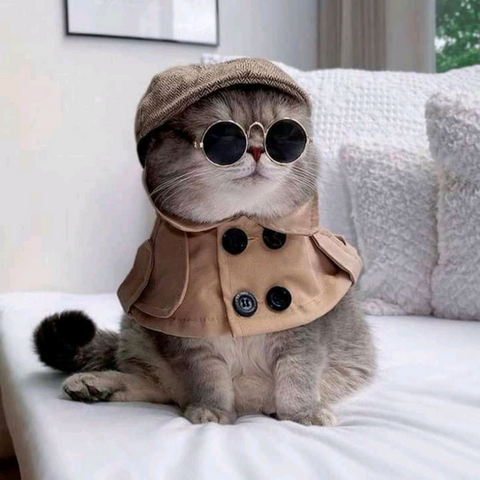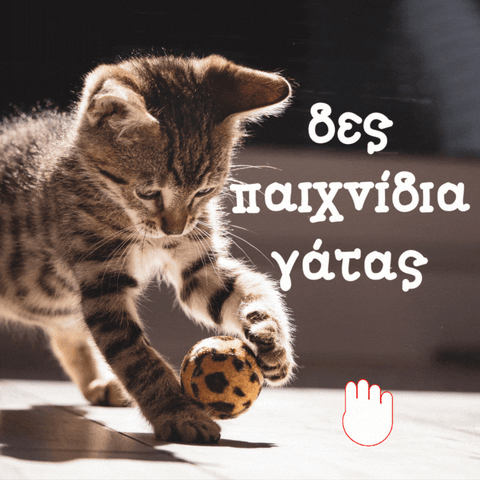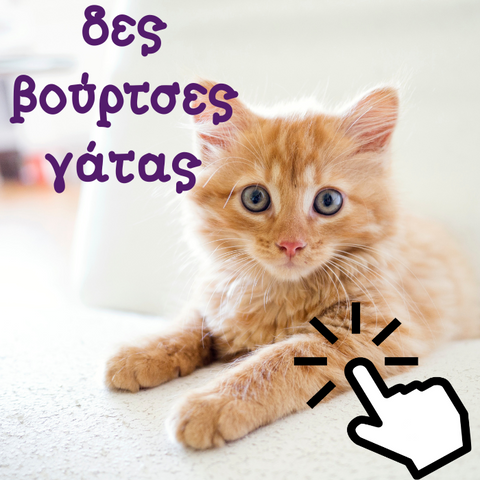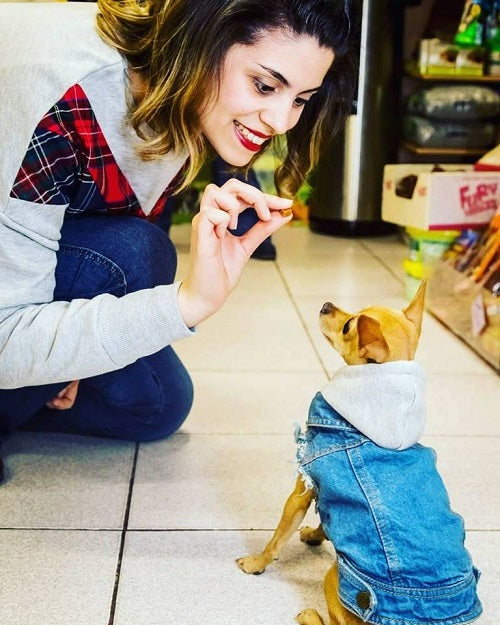
Everything you need to know about cat care
Share
Cats are among the most popular pets around the world, and unfortunately there are millions of stray cats around the world. Therefore, adopting a kitten is a tender act of love that will give a forever home to an animal in need.
Before you decide, however, it's a good idea to know the basics of caring for your four-legged friend, so you can offer her the best.
Typical appearance and behavior
Although they are usually considered solitary creatures, cats are very social and need regular human interaction. Although not true for all cats, many kitties are easy to live with and socialize with other cats or dogs in the same household.
Although they sleep most of the day, cats, especially kittens, are playful and need regular play for exercise and fun. Without regular interactive play , cats can become problematic in living together, as they will find an outlet for their instinctive need to stalk, chase, chew and scratch. As cats get older, their exercise needs may decrease, but even in old age most cats still want daily interaction through play.
Meowing, purring and growling are sounds that cats often make. Meowing can mean a variety of things and can range from a low-pitched "speech" to a loud howl. Some cats may meow as a greeting or to get the attention of people around them. Other meows may indicate stress or nervousness. Purring , on the other hand, can have a variety of meanings, but is most commonly associated with relaxation and comfort. Some cats, however, may purr to relieve themselves when they are stressed, scared or in pain.
The cat's place
All cats need a quiet, warm and dry place to sleep . This can be a pillow, a blanket or just her favorite spot on the sofa. At the same time, it is good for the kitty to have different places in the house where she can hide and calm down. In addition, because cats enjoy climbing and feel comfortable high up, it is important to design the cat's environment with multiple levels where it can jump, climb and rest
When you bring a cat to its new home, start with a small space set up with everything it needs. When she feels ready, slowly introduce her to additional rooms, one at a time. Thus, he will discover the house little by little and will not have difficulty adjusting.
The things you should definitely have at home, easily accessible for the kitty, are:
- Sandbox
- Running track , so it doesn't scratch furniture and carpets
- Bowl with fresh water and food
- Lots of games for her to play when she's alone
- Sleeping pillow or cot
Cat nutrition
Cats should be fed a balanced and complete cat food that is appropriate for their life stage and any underlying health issues.
While you can occasionally give the kitty a healthy treat , leftovers are generally not recommended as they can upset the balance of nutrients in the cat's overall diet and contribute to obesity.
What you should pay attention to when feeding the cat:
- Kittens should eat three to six times a day and adult cats two to three times a day. In general, the smaller the kitten, the more frequent the feeding.
- Use the recommendations on the cat food label as a guide for frequency and amount.
- Cats can easily become overweight if they don't get enough exercise. Canned food is a good alternative as it contains enough water so the cat ends up eating less. But, she can't stay in her bowl for more than 2-3 hours.
- You must definitely change the water every day, while many cats prefer to drink running water from the tap and much more than special cat fountains .
Cat grooming and care
Although cats regularly groom their coats on their own and stay naturally clean, extra grooming can certainly only do them good. Every cat's coat has different textures and lengths, so grooming needs vary from cat to cat. Short-haired cats should be combed 1-2 times a week, while long-haired cats should be combed daily.
From then on, it's a good idea to trim the cat's nails so that she doesn't have to constantly scratch them and they don't get too sharp. Also, regular brushing of her teeth will help to avoid dental diseases, gingivitis and stomatitis.
Regarding spaying, it is a myth that a female cat should only be spayed after her first estrus or first litter. Ask your vet to choose the best time to neuter your cat. Allowing a cat to have one litter before spaying does not provide any health or behavioral benefits.
Another myth is that cats are aloof, independent and don't need much interaction. Although cats may be more independent than dogs, most cats are extremely social creatures . Cats that do not have regular interaction with their loved ones can become self-destructive, overweight or insecure.
Cat health
Signs of a healthy cat:
- They are active and alert
- She has smooth skin without redness or itching
- He walks normally with an even gait, without obvious lameness or discomfort
- He has a clean coat with no signs of hair loss
- He has clear eyes and nose without discharge or inflammation
- He eats and drinks regularly
- He urinates and defecates normally
- It has no fleas, worms or other pests.
Prevention of internal and external parasites requires regular (especially in summer) application of ampoules and antiparasitic pills, as parasites are associated with serious diseases in cats.

Worrying signs (If you notice any of these signs, contact your vet):
- Hair loss
- Itching or marks on the skin
- Diarrhea or vomiting
- Bloody stools
- Uneven gait/obvious lameness or discomfort when walking
- Difficulty breathing
- Discharge or inflammation from the eyes or nose
- Weight loss
- Lethargy
- Excessive thirst
- Excessive urination or difficulty urinating
- Recurrent coughing or sneezing
- Decreased appetite
- Presence of fleas, worms or other pests
- Unexpected changes in behavior or normal routine.
Frequently asked questions
- Why is my cat licking me ? While a little licking can be a sign of affection, excessive licking can indicate an underlying problem, such as anxiety, fear or boredom. If your cat starts licking you obsessively, it should be checked by a vet.
- What does it mean when a cat purrs ? Purring in cats can have a variety of meanings, but it is usually a sign that your cat is relaxed and content. Purring is also thought to be a way a cat comforts itself, so purring can occur when a cat is stressed, anxious, scared or in pain.
- Why does my cat bite me ? Gentle bites can be a way your cat shows you its affection. Biting can occur during play as a natural behavior for cats. Biting while you pet her shows that your cat is trying to get you to stop.
- Why is my cat sneezing ? The occasional sneeze is usually nothing to worry about. If your cat sneezes repeatedly, excessively, in combination with eye or nasal discharge, contact your veterinarian.
- How often should I take a cat to the vet ? Healthy cats should have an initial vet check when they are first adopted and then every year for a routine checkup and annual vaccinations. Young kittens will need additional visits to the vet for their first round of vaccinations. If cats develop chronic diseases or are elderly, they should be examined more often.
- Why is my cat staring at me ? Cats generally stare at their humans to show their affection. Staring releases a hormone called oxytocin that is involved in feelings of love and trust. Sometimes staring, especially in combination with a "freeze" or rigid body, hissing or growling, can be a sign that the cat is uncomfortable asking for extra personal space.
- Why is my cat vomiting ? Cats often vomit to get rid of the hairballs that form in their stomachs. However, you should contact your vet if your cat sheds a lot of hairballs in a short period of time or the hairballs are mixed with bile or blood.
- What does it mean when a cat wags its tail ? Cats often wag their tails when they are focused, playful, frustrated, upset, or in pain. You should also consider the rest of the cat's body language to try to decipher what it may be trying to tell you, as many tail wags are similar. Rapid tail wagging may mean that your cat is uncomfortable and wants more space, or it may mean that your cat wants to play. Slow wagging of the tail may indicate that the cat is asking for extra personal space or it may be a sign that it is in pain.






